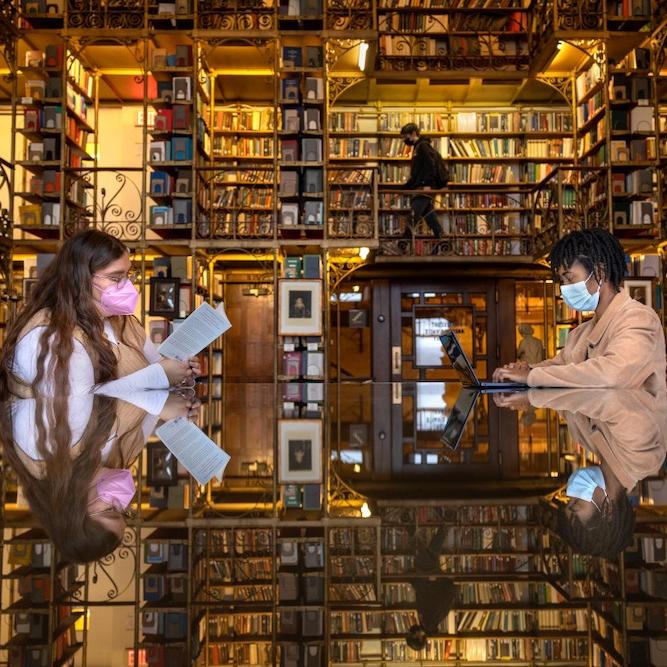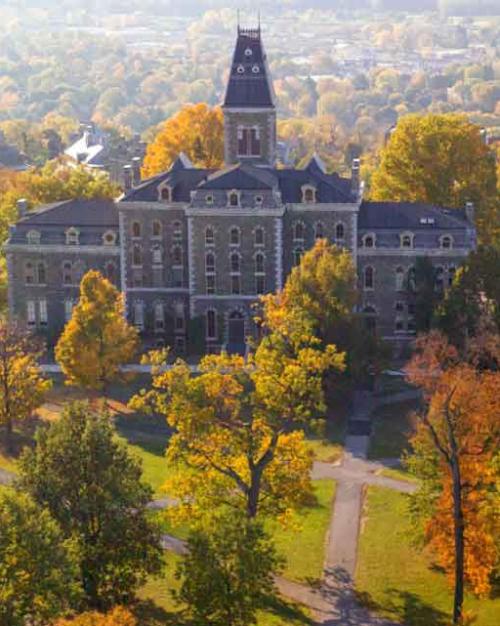The College of Arts and Sciences has embarked upon a $110 million transformation of McGraw Hall, with several Cornell families pledging more than $40 million in foundational gifts to enable the comprehensive renovation.
“McGraw Hall is a treasured icon at the heart of Cornell’s campus and a centerpiece of Cornell’s history,” said Ray Jayawardhana, the Harold Tanner Dean of Arts and Sciences. “It has been home to many legendary teachers and scholars over the past century-and-a-half. We look forward to restoring the beauty and grandeur of the building and revitalizing it as a hub for learning, discovery and innovation.
“I am grateful for the passionate advocacy and visionary support of the college’s volunteer leaders and their families who have stepped up,” he said.
The McGraw Hall renovation project will include an overhaul of the interior structure and layout, as well as an update to building systems and work to preserve and bolster the exterior façade. Design work has begun; construction is expected to be completed by 2027.
One of the oldest buildings on campus, McGraw Hall is home to the departments of history and anthropology and the college’s archaeology program. The structure needs major renovations to function as an effective space for research and teaching, with contemporary classrooms, labs and offices. The refurbishment and preservation of McGraw has become a top priority for the College of Arts and Sciences, and the university.
“It’s only fitting that a historic building like McGraw Hall, built soon after the Civil War, has been home to so many distinguished historians,” said Barry Strauss, the Bryce and Edith M. Bowmar Professor in Humanistic Studies (A&S). “Just to name a few: Americanists like Michael Kammen, Walter LaFeber, Mary Beth Norton, Joel Silbey, Richard Polenberg, R. Laurence Moore and Margaret Washington; Africanists and Asianists like Sherman Cochran, Sandra Greene and Chen Jian; and Europeanists like Isabel Hull, Steven Kaplan, Dominick LaCapra, John Najemy and Brian Tierney.”
Over the years, the history department has expanded its areas of expertise, while its faculty have earned top academic and teaching honors.
“From its early focus on United States and Western European history, the department has expanded its ranks to include some of the most internationally respected historians of Asia, Latin America and Africa, and a number of faculty who have also garnered the highest recognitions available to scholars in the humanities,” said Sandra Greene, Stephen ’59 and Madeline ’60 Anbinder Professor of African History (A&S).
“Three current members of the department have been inducted into the American Academy of Arts and Sciences,” Greene said, noting that four have been designated Stephen H. Weiss Presidential Fellows, recognition by the university of their commitment to the teaching and mentoring of undergraduates.
The building’s connections to Cornell’s anthropology and archaeology programs also run deep. Built in part by students working their way through college during Cornell’s first years, McGraw Hall has housed zoological, archaeological and anthropological collections assembled by A.D. White and others.
“Those collections brought the world to Ithaca’s campus,” said Adam T. Smith, Distinguished Professor of Arts and Sciences in anthropology. “The building has likewise hosted research programs that have sent Cornell students and faculty to all corners of the globe, from the Andes to the Caucasus, studying all periods of humanity’s past, from the Paleolithic to the present.”
Named for founding trustee John McGraw, who gave $120,000 for construction of the building, McGraw Hall was designed by architect Archimedes N. Russell and opened in 1872. Built of Ithaca stone, the four-story building was the first on campus to include a tower. Jennie McGraw, daughter of John McGraw, donated the chimes to be placed in the tower, where they stayed until McGraw Tower was built in 1891.
McGraw Hall was the original location of the university library, until the construction of Uris Library (what was then called the University Library) in 1892. McGraw also at one time housed the university museum, the Wilder Brain Collection, the Plaster Cast Collection, the Lab of Ornithology and the insect collection and the country’s first entomology department. The department of government was located in McGraw Hall from 1972 to 2003, when it moved to White Hall.
“At John McGraw’s memorial (1877), the tribute referred to the building’s ‘severe beauty’ and ‘solid and massive elegance,’ which the memorialists thought reflected ‘the grander qualities’ of McGraw’s own nature and, presumably, of Cornell’s as well,” said Isabel Hull, the John Stambaugh Professor of History Emerita (A&S). “Piecemeal renovations beginning in the 19th century have nibbled away at the original unity of the building’s design without helping it withstand the ravages of Ithaca’s weather. It is high time to restore McGraw Hall to its former place as the center of the Arts Quad and the symbol of Cornell that it was designed to be.”
The aim is to complete fundraising for the project to restore and revitalize the iconic Arts Quad building within the next few months. The College is actively seeking support for the renovation. To contribute, contact Esther Feng, associate dean for Alumni Affairs and Development in the College, at esther.feng@cornell.edu.








